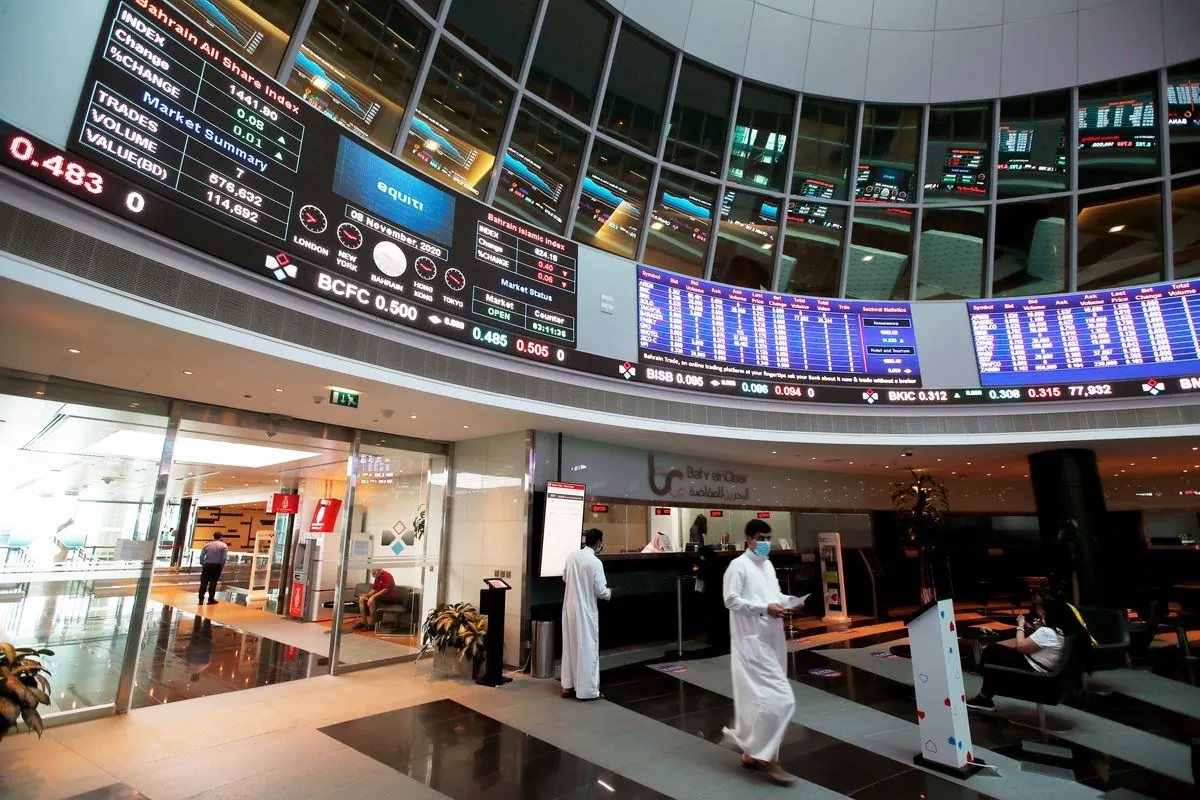On September 2, 2024, most Gulf stock markets concluded positively, driven by optimism surrounding potential interest rate reductions in the United States. Investors are closely monitoring upcoming economic indicators that could influence the Federal Reserve's decision-making process.
The Federal Reserve, established in 1913, is anticipated to initiate a rate-cutting cycle during its monetary policy meeting scheduled for September 17-18, 2024. According to the CME FedWatch Tool, introduced in 2005, traders currently estimate a 67% probability of a 25 basis-point decrease and a 33% chance of a 50 basis-point reduction by the U.S. central bank this month.
Market participants are eagerly awaiting several key U.S. economic reports this week, including the ISM manufacturing and services indices, JOLTS job openings, ADP private payrolls, and jobless claims data. The ISM Manufacturing Index, which has been published since 1948, and the JOLTS report, initiated in 2000, are particularly significant indicators of economic health. The U.S. jobs report, due on September 6, 2024, is expected to play a crucial role in shaping investors' expectations regarding the magnitude of potential rate cuts.
It's worth noting that monetary policy in the six-member Gulf Cooperation Council (GCC), established in 1981, typically aligns with the Federal Reserve's decisions. This is primarily due to most regional currencies being pegged to the U.S. dollar.
In the United Arab Emirates, the Dubai Financial Market, founded in 2000, saw its main share index gain 0.7%. This increase was led by Emaar Properties, a prominent developer established in 1997, which rose by 3.2%. Additionally, Emirates NBD, the top lender formed through a merger in 2007, experienced a 1.5% uptick.
The Abu Dhabi Securities Exchange, also established in 2000, recorded a 0.3% increase in its index. Meanwhile, Qatar's benchmark advanced by 1.1%, with most of its constituents performing positively. Qatar Islamic Bank, founded in 1982, stood out with a 2.6% gain.
In a separate development, QatarEnergy, the state-owned energy company founded in 1974, announced plans to more than double its annual urea production. The company aims to increase output from 6 million tons to over 12.4 million tons, although no specific timeframe was provided. This expansion is significant given that urea is the most widely used solid nitrogen fertilizer globally.
Contrary to the overall positive trend, Saudi Arabia's benchmark index experienced a slight decline of 0.2%, primarily affected by a 1% drop in Al Taiseer Group, an aluminium products manufacturer.
Outside the Gulf region, Egypt's blue-chip index fell by 0.6%, with EFG Holding declining by 3.6%. This comes as analysts predict that the Central Bank of Egypt, established in 1961, will maintain current overnight interest rates at its upcoming meeting on September 5, 2024. The Egyptian Exchange, one of the oldest stock markets in the Middle East dating back to 1883, continues to navigate economic challenges.
As global markets remain interconnected, investors will continue to monitor both regional developments and international economic indicators to inform their investment strategies in the coming weeks.
